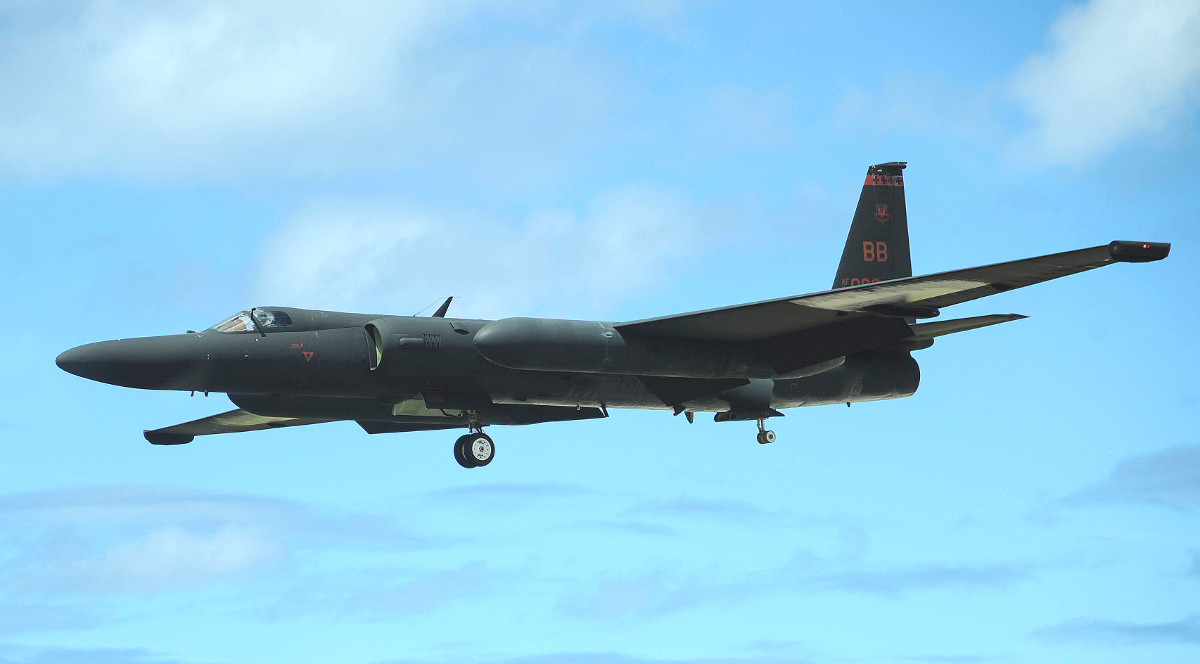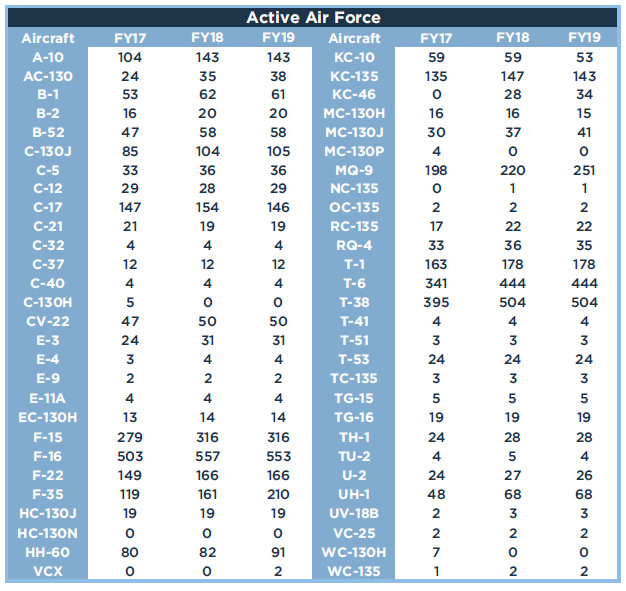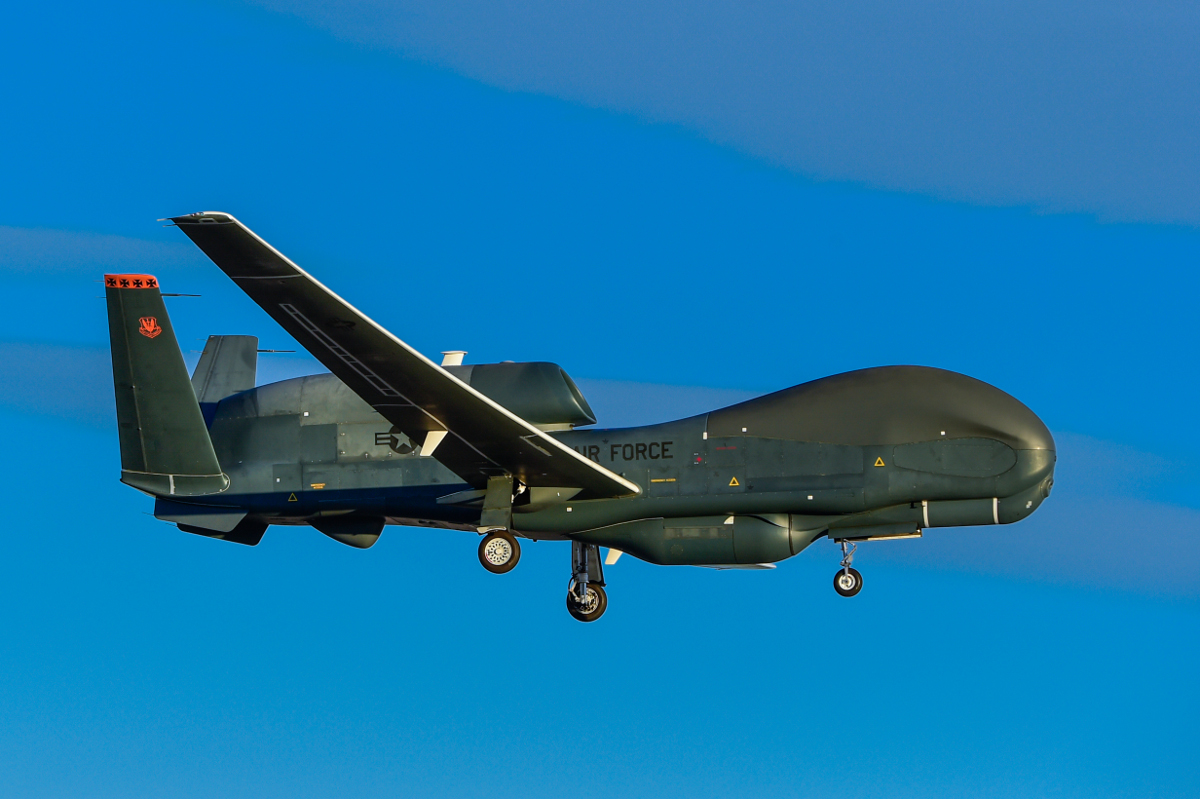The U.S. Air Force seems to have effectively abandoned plans to retire its fleet of U-2S Dragon Lady spy planes in the near future. Now, amid especially high demands for strategic intelligence and concerns about a gap in aerial battlefield surveillance capabilities, Lockheed Martin is pitching proposals to give the iconic aircraft upgraded sensors and data links, as well as the ability to carry three different intelligence gathering systems all on the same mission.
Our good friend Stephen Trimble, head of Flightglobal’s Americas Bureau, was first to get the new details after getting an exclusive tour of Lockheed Martin’s Site 2 hangar, part of the company’s facilities in Palmdale, California earlier in March 2018. Site 2 is home to the firm’s U-2 program and is where it performs heavy depot maintenance on the planes for the Air Force. As a rule, the service sends each U-2 to the facility for a full overhaul approximately every 4,800 flight hours.
“My strategy is to put as much as we can within the [US military’s next six-year budget plan], because we’ve got room to grow,” Kyle Franklin, Lockheed Martin’s U-2 program manager, told FlightGlobal during the visit. This is a significantly different attitude than the company might have had even last year.
Since 2011, the Air Force has gone back and forth on the idea of supplanting the Dragon Ladies with RQ-4 Global Hawk drones. As recently as 2016, the service still planned to retire the U-2S no later than 2020.

Its latest budget request for the 2019 fiscal year, which it released in February 2018, suggests that this is unlikely to happen any time soon. The proposal includes funding for U-2S upgrades and sustainment through at least 2023. The Air Force even says it expects to grow the size of the fleet from 24 to 27 by the end of 2018, even though it says it will then retire one older aircraft by the end of the following year.
As such, Lockheed Martin is very clearly expecting to be involved in the U-2 program for the foreseeable future. The centerpiece of the company’s latest push is a newly proposed “Tri-Intelligence” or “Tri-INT” configuration for the planes.

This refers to an aircraft with three distinct sensor suites. These would be a multi-spectral camera, a radar imaging system, and a set of equipment to collect various different types signals.
At present, the Dragon Ladies can only bring two of these three distinct capabilities along on a single mission. This typically consists of the Senior Glass signals intelligence suit in the fuselage and “Super Pods” under the wings, and either the Senior Year Electro Optical Reconnaissance System-2 (SYERS-2) or Advanced Synthetic Aperture Radar System-2 (ASARS-2) in the nose. You can read more about these different configurations here.

The latest version of SYERS-2, the SYERS-2C, is a 10-band multi-spectral camera that has traditional electro-optical and infrared capabilities, but can also build images based on the electromagnetic signatures that different objects produce. The most up-to-date ASARS-2, the ASARS-2A, is a mechanically-scanned array radar that produces imagery based on the reflection of those waves.
The full Senior Glass system is actually capable of collecting intelligence on a variety of very different signals. The Senior Spear equipment, which fits inside one of the aircraft’s two Super Pods can spot and monitor enemy communications. The Senior Ruby gear, which goes in the other pod, can locate and categorize hostile radar emissions. An antenna farm along the belly adds additional capabilities, which could include spying on different data streams and the ability to more accurately geo-locating the source of a transmission.
Lockheed Martin’s Tri-INT arrangement would consolidate the signals intelligence systems into just one Super Pod, and potentially elsewhere along the fuselage, and fit a multi-spectral camera under the other wing. This could be the SYERS-2C, but the firm told FlightGlobal it would prefer to use United Technologies Aerospace Systems’ (UTAS) 10-band MS-177A, which sits inside a rotating turret and is therefore more flexible.

Raytheon’s ASARS-2B would go in the nose. Though this radar shares a basic nomenclature with the older unit, it is essentially an all-new, active-electronically scanned array (AESA) design that scans faster and is more powerful and precise, producing better imagery, quicker. It also has a ground moving target indicator capability to track moving vehicles or potentially help the pilot refine their search area based on those tracks. The Air Force already plans to spend more than $215 million on development of ASARS-2B between 2019 and 2023.
It is also in the process of adding the older seven-band MS-177 camera on the RQ-4 and wants to begin installing the improved A model, along with other upgrades to those unmanned aircraft, in the near future as well. Lockheed Martin could propose the Air Force expand its purchases of MS-177As to include additional units to go into upgraded U-2s.

Lockheed Martin will still have to either develop or otherwise locate a compact signals intelligence suite that offers equal or better capabilities to Senior Glass to complete its proposed Tri-INT U-2S package. Lastly, the updated planes would feature additional and modernized data links, including multi-function advanced data links (MADL) or similar functionality to allow the Dragon Ladies to communicate with stealthy F-35 Joint Strike Fighters, which can themselves vacuum up an impressive amount of intelligence data, and B-2 Spirit bombers in near real time.
Coupled with a device Lockheed Martin calls the “Einstein Box,” which acts as a gateway for various data streams, the high-flying spy planes could be able to fuse different information together and otherwise help provide other aircraft, personnel on the ground or at sea, or analysts back at base a more complex “picture” of the battlefield.
Having a U-2S that could perform all these missions without having to shift configurations would make the aircraft significantly more flexible. It could potentially give the Air Force the ability to gather more intelligence, and of different varieties, per sortie and reduce the total number of aircraft and flying time required to acquire the same scope of information.
Also, though it is an increasingly old platform, the U-2S continues to be able to use its ability to fly at altitudes above 70,000 feet, and its very advanced electronic warfare suite, to offer a capable defense against a variety of potential threats. Flying high, the aircraft can use a slanted flight pattern to peer into target areas with its long-range cameras and radars without having to expose themselves to the same level of danger as flying directly over them.
As a result, according the FlightGlobal, the Air Force still feels the Dragon Ladies can perform in “marginally contested” environments. This helps explain, at least in part, why the service has become increasingly convinced it cannot replace the planes outright with the lower-flying and potentially more vulnerable Global Hawk drones.

All of this could make the Tri-INT U-2S a particularly attractive option for the Air Force, especially given the voracious appetite of American commanders for strategic intelligence around the world. Growing tensions with Russia, China, North Korea, and Iran, among others, have stretched already limited resources even further.
“I don’t have enough [aerial intelligence, surveillance, and reconnaissance assets] because there isn’t enough to go around,” U.S. Navy Admiral Harry Harris, head of U.S. Pacific Command, told members of Congress during a hearing on March 15, 2018. The senior officer specifically named the Air Force’s RC-135V/W Rivet Joint signals intelligence and WC-135 Constant Phoenix nuclear intelligence aircraft, as well the Navy’s P-3C patrol and EP-3E signals intelligence aircraft as “critical to intelligence collection” in his area of the world.
It seems hard to imagine American commanders elsewhere, particularly in Africa, Europe, and the Middle East, would disagree. There’s no indication that this steady desire for more aerial intelligence is likely to decrease any time soon, either.
Having both Tri-INT U-2S spy planes, as well as RQ-4s, wil give the Air Force additional and complimentary assets for long-range intelligence, surveillance, and reconnaissance missions. And the Tri-INT Dragon Ladies could potentially fill other functions beyond just strategic intelligence, further increasing the flexibility of the relatively small fleet.

Perhaps most immediately, an improved U-2S aircraft could become another part of the Air Force’s multi-faceted approach to replacing the E-8C Joint Surveillance Target Attack Radar System (JSTARS) battlefield management command and control aircraft. At present, the Air Force’s plan is to supplant these planes with a mix of different manned and unmanned aircraft by 2023.
The upgraded U-2S could offer another sensor node to feed information back to other battlefield management aircraft or ground exploitation control and intelligence exploitation elements, which could then analyze the information and pass it along to other elements as necessary. In particular, the ASARS-2B may be able to provide a similar type of functionality to the JSTARS’ electronically-scanned phased-array AN/APY-7 radar, but with the benefits of its AESA design and the Dragon Lady’s significantly higher operational ceiling.
On top of that, the Einstein Box could allow the U-2S to act as a communications gateway, data fusion center, an relay akin to the Air Force’s Battlefield Airborne Communications Node (BACN) aircraft. In 2017, a Dragon Lady with the system performed exactly this mission in an experimental capacity during that year’s iteration of the annual Northern Edge exercise in Alaska.

The Tri-INT U-2S configuration could also serve as the starting place for further developments that add additional capabilities or further transform the Dragon Lady’s operating concepts. There is already a historical precedent for operating the aircraft in the maritime surveillance role and the Air Force has already employed the aircraft in a reconnaissance capacity in the Western Pacific thanks to its range and high-flying capabilities.
The desire to monitor China’s expanding maritime forces, especially in the South China Sea, as well as enforce sanctions and a potential blockade against North Korea, will only further increase the demand for long range, persistent over-water surveillance capabilities. A further improved U-2 could provide a readily available and flexible platform for those missions.
Over time and as new threats steadily make the U-2S increasingly more vulnerable, Lockheed Martin could exploit the aircraft’s existing modularity to add in advanced active defensive technologies, potentially including laser defense systems the Air Force is already working on for fighter and other aircraft. Lockheed itself is involved in that project, being responsible for the directed energy weapon system itself.
The company could propose more radical changes to the aircraft, as well, and is presently under contract with the Missile Defense Agency to develop a high-flying, unmanned platform to carry an offensive laser weapon to potentially destroy ballistic missiles during their initial boost phase. Between 2014 and 2015, as it looked like the Air Force might retire the U-2, Lockheed Martin suggested it could build a pilot-optional version or a derivative with some low-observable features that uses as many existing components as possible.
These are exactly these kinds of characteristics that have kept the U-2 going after more than six decades and avoid ending up in the Bone Yard on multiple occasions since 1969. With all this in mind, it seems increasingly clear that the Dragon Ladies still have a lot of life left in them still.
Contact the author: joe@thedrive.com
